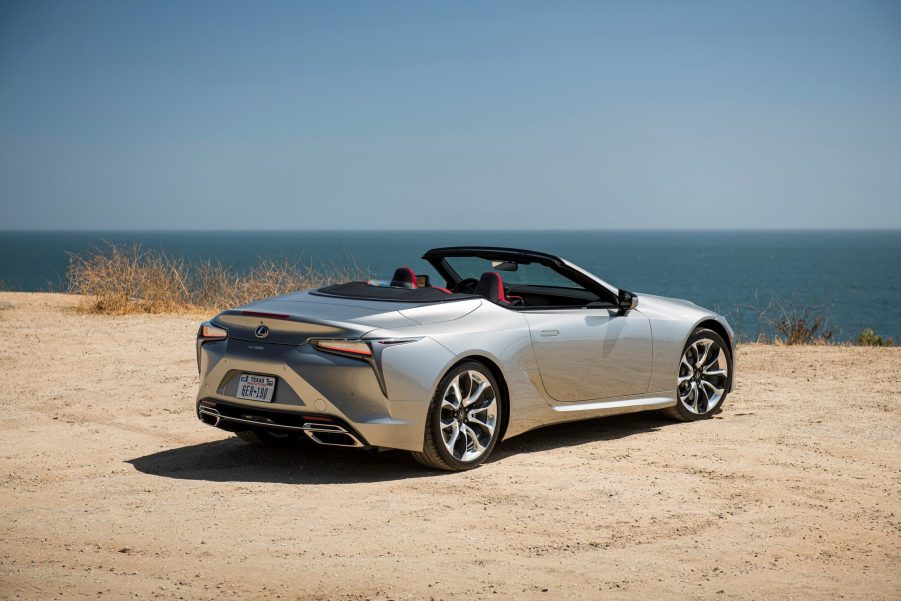
When’s the Best Time To Buy a Convertible?
With a variety of excellent convertibles on the market, it’s relatively easy to get behind the wheel of a drop-top. But even if you buy a cheap one like the Miata, saving money during car shopping is rarely a bad idea. And whether you buy new or used, convertible or not, getting the timing right is important. But is there a best time to buy a convertible?
Winter isn’t the ideal convertible driving season, but it is the best shopping season

In general, you can find the best car deals towards the end of the month, The Drive reports. Especially if that month is the end of the quarter, or, better yet, the calendar year. Here in the US, that last part means winter. Which, as it happens, is the best time to buy a convertible, CarGurus reports.

It likely seems odd to buy a convertible when snow and ice cover the ground, WhatCar muses. However, that’s precisely what makes it the best time to go drop-top shopping. Late spring, early fall, and summer are typically the times when people like driving with the roof down. So, naturally, convertible prices go up.
Winter means you can’t enjoy the top-down experience. As a result, the convertible loses its unique appeal, and prices drop. Plus, speaking as a Miata owner, winter means less time on the road and more time storing my car in a garage. That ties up space; and if you have to rent a storage facility, it raises ownership costs. This lowers a convertible’s desirability and market value, which is a boon if you want to buy.
Is buying a convertible any different than buying a conventional car?
At their core, convertibles are still cars. As such, whether you’re looking at a new or used one, much of the same buying advice applies. For example, checking for rust, potential service history, looking for mechanical faults, and potentially getting a pre-purchase inspection. However, there are a few unique things you should consider when buying a convertible, Driving.ca reports.
Convertible roofs take up space, either in the cabin or in the trunk. The removable roof also makes a convertible noisier than a similar non-convertible car. Plus, because a modern car’s roof is structural, removing it generally makes the car less stiff and harshens the ride somewhat, Nationwide reports.
Convertibles aren’t necessarily more dangerous than solid-roof cars. And automakers typically counter this lack of rigidity with additional bracing. That’s the case even with cars designed to be convertibles from the start, like the Miata and Fiat 124 Spider. Still, according to Consumer Reports, modern car designs generally keep the ‘chassis shudder’ to a minimum. A few high-end carbon-fiber-bodied convertible supercars don’t even need additional bracing.
There’s also one more thing to take into account when you go to buy a convertible: what kind of roof do you want?
What should you look for when getting a used hard- or soft-top?

Generally speaking, convertibles are split into two categories: hard-tops and soft-tops. The Porsche 911 and Chevrolet Corvette also offer models with removable roof panels, but they’re not ‘true’ convertibles.
A hardtop is heavier and more complex than a soft top, Autotrader reports. It also takes up more space and is more difficult to put up and down. However, it requires less care than a fabric convertible top and typically provides better noise insulation.
Hard-top convertibles also stand up better to automatic car washes and don’t need to be replaced like fabric roofs do. I had to replace my 1999 Miata’s roof last year because years of sun and use broke the original roof down. Plus, being made of metal, a hardtop makes your convertible harder to break into.
But both soft-top and hard-top convertibles still have to deal with weather sealing. As the roof goes down and up, its rubber seals and gaskets eventually wear down. And the various water channels can get blocked up and cause mildew or wet spots. Before you buy a used convertible, make sure you check the condition of these components.
Follow more updates from MotorBiscuit on our Facebook page.


